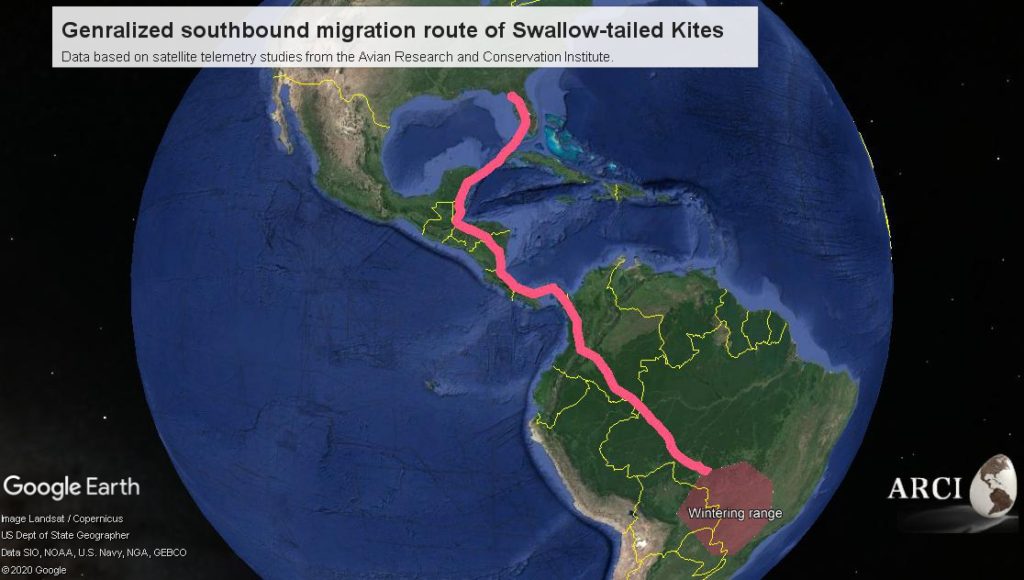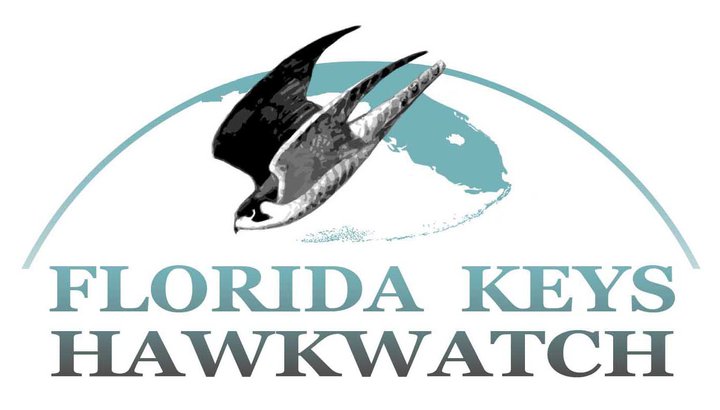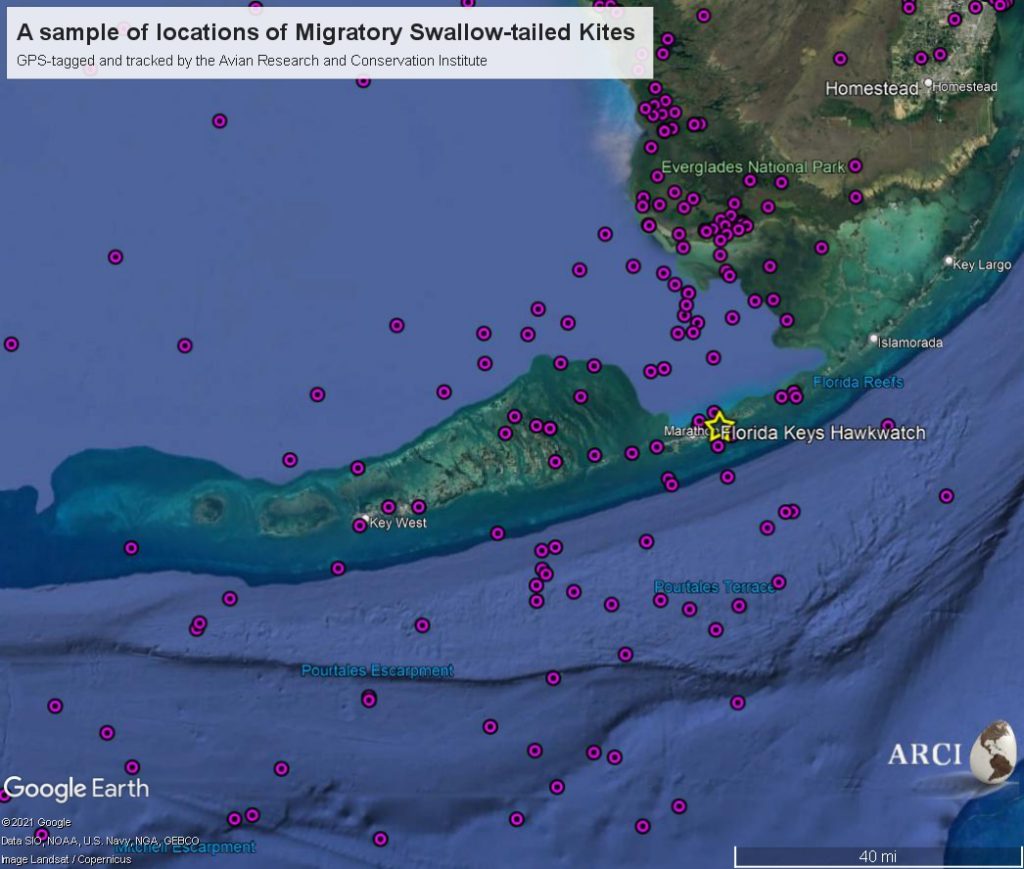By now you have either seen posts and blogs about Swallow-tailed Kites heading south or you have NOT been seeing Kites in their normal Southeastern U.S. locations. Swallow-tailed Kites are early migrants. Most leave their breeding grounds from the end of July through the beginning of September.

Swallow-tailed Kites. photo by A. Kent
ARCI first used short-life satellite telemetry in 1996 to discover the routes, timing, and winter destinations of migrating Swallow-tailed Kites from the U.S. breeding population. Since then, tracking technology has continually improved, allowing us to accumulate detailed data for over 200 migratory flights of nearly 100 individuals! These data are documenting changes in departure and arrival times, travel routes, stopover sites, and wintering ranges.

While most of the newer transmitters provide very accurate locations once an hour, we cannot “see” what the Kites do between fixes and how many birds are traveling together, information that is best obtained with eyes-to-the-skies. Since 1999, Florida Keys Hawkwatch has been meticulously collecting such valuable migration data for most raptor species during their core September-to-November migration season. Understandably, it has not been affordable for this nonprofit to begin their counts weeks earlier just to acquire Swallow-tailed Kite data. However, they secured enough support this year to begin their 7-day-a-week observations a month early. Since 1 August, as part of “KiteFlight2021,” Luis Gles and Mariah Hryniewich have been documenting the passage of southbound Swallow-tailed Kites at Curry Hammock State Park, the primary field site for Florida Keys Hawkwatch.

You may have seen ARCI’s request for Swallow-tailed Kite sightings from July through August and participated in our Swallow-tailed Kite population monitoring surveys (THANK YOU!). Besides rigorous long-term tracking of population trends for the U.S. breeding population, these surveys help us identify where Kites spend their pre-migratory roosting and foraging time, a very critical period for this long-distance migrant. They spend weeks to months putting on weight by feeding together during the day on swarming insects and resting communally at night, all to prepare for their 5,000-mile+ trip that begins with a dangerous open-ocean crossing of 450 to 600 miles. Although most of the southbound kites strike out for the Yucatan Peninsula from the southwest coast of Florida’s mainland, Florida Keys Hawkwatch is now determining the timing, number, and flock sizes of the portion that passes through the lower Florida Keys. The kites they observe are moments away from embarking over the Straits of Florida or the Gulf of Mexico – an inspiring migration spectacle in itself.

Combining these two migratory monitoring techniques provides valuable information for Swallow-tailed Kite research. Five of our 11 GPS-tracked Swallow-tailed Kites left Florida between 9 and 11 August, the same days when high numbers of Kites were passing the Hawkwatch station. When we relate this to the weather and wind patterns at that time, we see that a passing cold front was encouraging Kites to capitalize on the prevailing tailwind to help ease their passage across the Gulf of Mexico. We are looking forward to learning more from Florida Keys Hawkwatch and to contributing all we can to our mutual understanding of how migration plays into the species’ conservation biology, especially with the unrelenting advance of climate change.
Keep tabs on all the great raptors that are soon to be counted in the Florida Keys! We also hope you will consider sending Florida Keys Hawkwatch a donation so they can continue to collect the exciting and valuable raptor migration data for which they have become famous.
Safe travels to all migrating birds!


Leave a Reply